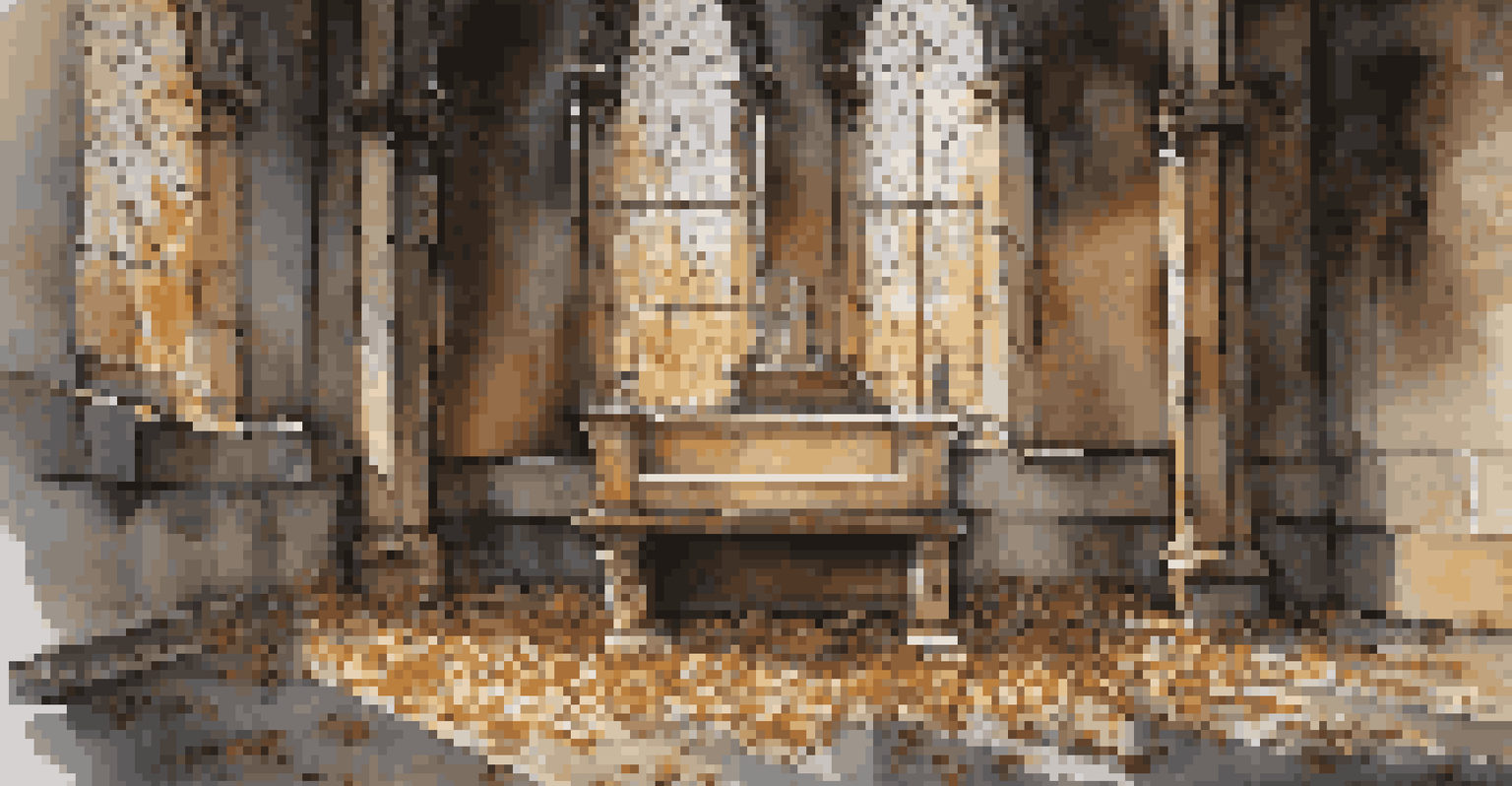Exploring Abandoned Churches: Sacred Spaces in Ruins

The Allure of Abandoned Churches in Today's World
There's something undeniably captivating about abandoned churches. These once-sacred spaces, now often left to the elements, tell stories of the past, evoking a sense of nostalgia and mystery. As society evolves, many of these structures have fallen into disrepair, yet they remain powerful symbols of faith and community.
Churches are not just places of worship; they are places of community, history, and culture.
Visiting these sites offers a unique glimpse into history. Each crumbling wall and overgrown altar speaks to the lives that once filled the space with prayers and hymns. It’s as if time stands still, allowing us to connect with the souls who once gathered there.
In an age where rapid urbanization can overshadow historical significance, exploring abandoned churches helps preserve their stories. They challenge us to reflect on what we value and remember, inviting a deeper appreciation for the rich tapestry of human experience.
A Journey Through Time: Architecture and Design
Abandoned churches often showcase stunning architecture that reflects the era in which they were built. From Gothic spires to Romanesque arches, these designs reveal the artistic aspirations of their time. As you step inside, the intricate stained glass and stone carvings transport you to a different world.

The design elements of these buildings not only served aesthetic purposes but also functional ones, creating spaces for worship that inspired reverence. The high ceilings and vast interiors were meant to lift the spirit, while providing a communal gathering space for the faithful.
Abandoned Churches Tell Rich Histories
These structures serve as powerful symbols of past communities, evoking nostalgia and prompting reflections on cultural heritage.
While many of these architectural features may be crumbling, they still hold a haunting beauty that captivates visitors. It’s a reminder of the craftsmanship and devotion that went into building these sacred spaces, even as nature reclaims them.
Nature's Embrace: How Nature Reclaims These Spaces
One of the most striking aspects of abandoned churches is how nature slowly takes over. Vines creep along the walls, and moss blankets the floors, creating a surreal blend of man-made beauty and the wild. This fusion evokes a sense of tranquility and reinforces the idea that life continues, even in decay.
The beauty of decay is a reminder that life is a cycle of beginnings and endings.
The process of nature reclaiming these structures can be both beautiful and melancholic. It illustrates the cycle of life, reminding us that everything is temporary. As we watch trees sprout through cracked roofs, we are reminded of the resilience of nature and its ability to adapt.
For many, this coexistence between the sacred and the natural world sparks profound reflections on spirituality. It serves as a gentle reminder that even in ruin, there is beauty, and that the divine can be found in unexpected places.
Photographic Opportunities: Capturing the Ruins
For photographers and artists, abandoned churches offer a treasure trove of inspiration. The interplay of light and shadow within these dilapidated spaces creates dramatic visuals that tell a story. Each corner presents a unique composition, waiting to be captured.
Whether you’re an amateur or a professional, the sense of mystery that envelops these spaces can lead to stunning photography. The contrast between the intricate details and the wear of time invites creative expression, making every shot a unique interpretation of beauty.
Nature Reclaims with Haunting Beauty
The interplay between nature and these ruins illustrates the cycle of life, highlighting resilience and unexpected beauty in decay.
Moreover, these sites often attract urban explorers and photographers alike, fostering a community of individuals who appreciate the aesthetics of decay. Sharing these images can spark conversations about history and inspire others to explore the stories behind these forgotten places.
Cultural Significance: Stories Behind the Ruins
Every abandoned church has a story waiting to be uncovered. Many were once the heart of their communities, hosting celebrations, ceremonies, and gatherings. Their decline often mirrors the changing dynamics of society, reflecting shifts in population and cultural values.
Exploring these sites can lead to a deeper understanding of local history. Many communities have ties to these structures, and discovering their past can foster a sense of connection and pride. These ruins prompt us to ask questions about our heritage and the legacies we wish to preserve.
In this way, abandoned churches serve as cultural landmarks, reminding us of our roots while encouraging us to think about the future. They challenge us to honor our history while considering how we can contribute to our communities today.
Preservation Efforts: Saving Sacred Spaces
As awareness grows about the value of these abandoned churches, preservation efforts are becoming more critical. Many organizations are dedicated to restoring these historic sites, recognizing their cultural importance. These initiatives aim to breathe new life into places that once thrived with community spirit.
Preservation not only protects the physical structure but also honors the stories and memories associated with it. By investing in these sites, communities can create spaces for future generations to learn about their history and culture.
Preservation Efforts Are Crucial
Restoring abandoned churches not only protects their physical structures but also honors the stories and memories tied to these sacred spaces.
However, these efforts face challenges, such as funding and maintenance. It’s essential for local communities and history enthusiasts to advocate for the preservation of these sacred spaces, ensuring their stories are not lost to time.
Visiting Abandoned Churches: Ethical Considerations
As you plan your exploration of abandoned churches, it's essential to approach these sites with respect and awareness. Many of these structures are still owned by individuals or organizations, and trespassing can lead to legal issues. Always seek permission when possible and respect any posted guidelines.
Moreover, these spaces are often steeped in history and spirituality, so it's crucial to maintain a respectful demeanor. Consider the significance of these places to the local community and the memories they hold for many.

By being mindful of your impact, you can enjoy the beauty of these abandoned churches while honoring their past. This ethical approach not only enriches your experience but also ensures that these sacred spaces can be appreciated by future generations.